
(Photo: courtesy of
Michael Keller,
School of Agriculture and Wine,
University of Adelaide,
South Australia.)
This Caterpillar is a
worldwide pest, and was unfortunately introduced
into Australia by accident.
It is an agricultural pest on plants from the family
BRASSICACEAE :
Chinese broccoli ( Brassica oleracea var. alboglabra ),
Cauliflower ( Brassica oleracea var. botrytis ),
Cabbage ( Brassica oleracea var. capitata ),
Brussel Sprouts, ( Brassica oleracea var. gemmifera ),
Broccoli ( Brassica oleracea var. italica ),
Chinese cabbage ( Brassica rapa var. pekinensis ),
Radish ( Raphanus sativus ),
Watercress ( Rorippa nasturtium-aquaticum ), and
Mustard ( Sinapsis alba ).
Host plants also include several ornamentals, such as :
Wallflower ( Cheiranthus cheiri ),
Candytuft ( Iberis umbellata ),
Alyssum ( Lobularia maritima ), and
Stocks ( Matthiola longipetala ).
An important reservoir for the species are various weeds, such as :
Wild mustard ( Sinapis arvensis ).
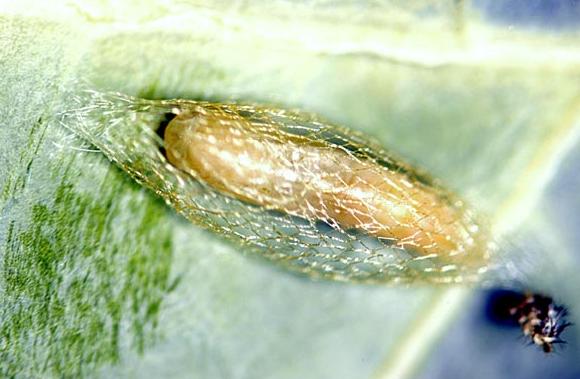
cocoon and pupa
(Photo: copyright Lyn Finn,
Hunter Region School of Photography in Newcastle,
Macquarie Hills, New South Wales)
The caterpillar grows to a length of about 2 cms.
It then pupates in an open mesh cocoon on a leaf of the foodplant.

adult moth
(Photo: courtesy of
Donald Hobern, Aranda, Australian Capital Territory)
The adult moth is brown with a pale zig-zag mark
along the trailing edge of the fore wings.
When the wings are closed,
these create a series of diamond shapes along the back.
It has a wingspan of about 1.5 cms.
The pheromones of
this species have been identified.
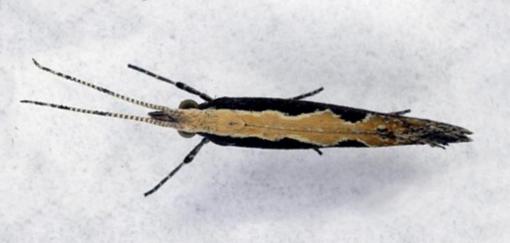
(Photo: copyright Lyn Finn,
Hunter Region School of Photography in Newcastle,
Macquarie Hills, New South Wales)
Internationally, it is a pest in:
France,
Hawaii,
India,
Japan,
United Kingdom, and
United States of America,
Venezuela,
Zimbabwe,
as well as being occurring over the whole of Australia, including:
Western Australia,
Northern Territory.
Queensland,
Norfolk Island,
New South Wales,
Australian Capital Territory,
Victoria,
Tasmania, and
South Australia.
This tiny moth is well-known for its
migratory tendencies. Thousands have been counted in a
single night crossing coastlines.
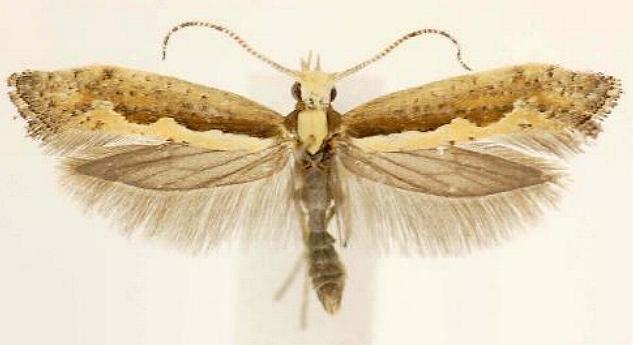
(Photo: courtesy of Jean-Francois Landry, Ottawa Research and Development Centre)
Attempts to control this pest have included:
use of
acylurea growth regulators,
luring them with
pheromones,
the bacterium
Bacillus thuringiensis (
BACILLACEAE ) and associated toxins,
natural
virus diseases,
extract of
Neem seeds,
the larval-parasitoid wasp
Diadegma insulare (
BRACONIDAE ),
the egg-parasitoid wasp
Trichogramma chilonis (
TRICHOGRAMMATIDAE ),
the fungus
Beauveria bassiana (
CLAVICIPITACAEAE ), and
breeding
transgenic plants that are resistant.
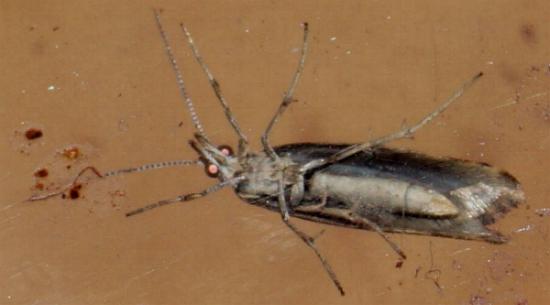
underside
(Photo: copyright of Brett and Marie Smith, at
Ellura Sanctuary, South Australia)
Some confusing look-alikes are
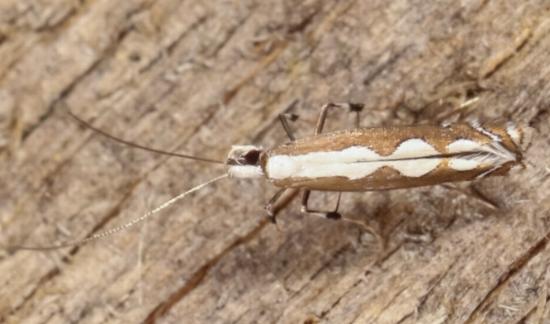 Dialectica scalariella
Dialectica scalariella
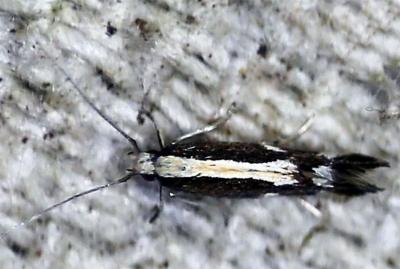 Elachista flammula
Elachista flammula
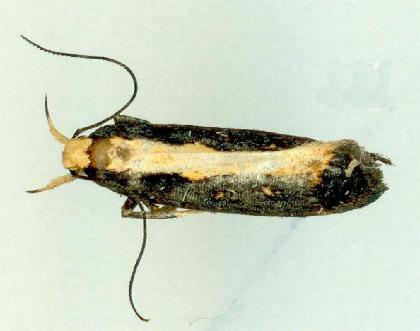 Helcystogramma plutelliformis
Helcystogramma plutelliformis
 Leptocroca sanguinolenta
Leptocroca sanguinolenta
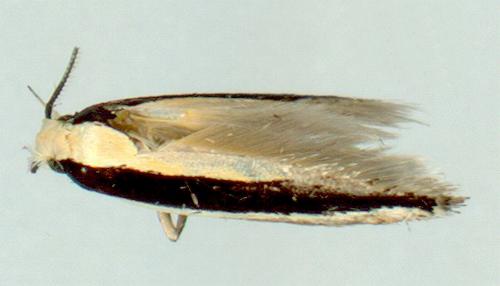 Macrenches eurybatis
Macrenches eurybatis
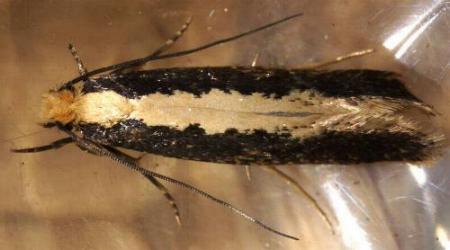 Monopis crocicapitella
Monopis crocicapitella
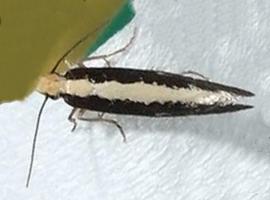 Monopis ethelella
Monopis ethelella
Further reading :
Ian F.B. Common,
Moths of Australia,
Melbourne University Press, 1990, fig. 21.7, p. 208.
Carl Linnaeus,
Insecta Lepidoptera,
Systema Naturae,
Volume 1, Edition 10 (1760), Class 5, Part 3, p. 538, No. 265.
Peter B. McQuillan, Jan A. Forrest, David Keane, & Roger Grund,
Caterpillars, moths, and their plants of Southern Australia,
Butterfly Conservation South Australia Inc., Adelaide (2019), p. 45.
Paul Zborowski and Ted Edwards,
A Guide to Australian Moths,
CSIRO Publishing, 2007, pp. 24, 61.
(updated 31 October 2012, 27 February 2025)







 Dialectica scalariella
Dialectica scalariella Elachista flammula
Elachista flammula Helcystogramma plutelliformis
Helcystogramma plutelliformis Leptocroca sanguinolenta
Leptocroca sanguinolenta Macrenches eurybatis
Macrenches eurybatis Monopis crocicapitella
Monopis crocicapitella Monopis ethelella
Monopis ethelella



